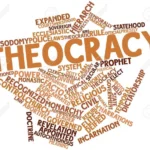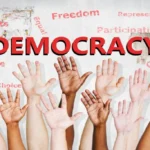
Monarchies have long captivated the imagination of people around the world, serving as symbols of tradition, power, and cultural identity. From the majestic palaces of Europe to the revered royal families of Asia, the institution of monarchy is steeped in history and intrigue. In this blog, we will explore 25 fascinating facts about various monarchies, shedding light on their unique characteristics, historical significance, and the roles they play in contemporary society. Whether you’re a history buff, a culture enthusiast, or simply curious about the royal realm, these intriguing insights will deepen your understanding of how monarchies continue to shape our world today. Join us as we delve into the captivating world of kings, queens, sultans, and emperors!
Japan’s Monarchy: The Japanese monarchy, known as the Chrysanthemum Throne, is the oldest continuing hereditary monarchy in the world, with its origins tracing back over 1,400 years. The first emperor, Emperor Jimmu, is said to have ascended to the throne in 660 BC, according to Japanese legend. The current emperor, Naruhito, ascended the throne on May 1, 2019, following the abdication of his father, Emperor Akihito, who was the first Japanese emperor to abdicate in over two centuries. The Japanese imperial family is deeply intertwined with the country’s culture and traditions, and the emperor serves as a symbol of the state and unity of the people, rather than a political leader.
British Monarchy: The British monarchy is one of the most recognized and influential royal families globally. Queen Elizabeth II reigned for 70 years, from February 6, 1952, until her death on September 8, 2022, making her the longest-reigning monarch in British history. Her reign saw significant changes in the UK and the Commonwealth, including decolonization, the evolution of the monarchy’s role in a modern democracy, and numerous royal events that captivated the public. The British royal family, particularly through events like royal weddings and jubilees, has a substantial impact on British culture and tourism, with millions visiting royal sites each year.
Vatican City: Vatican City is a unique entity as it is the world’s smallest independent state and operates as an absolute monarchy. The Pope serves as both the spiritual leader of the Roman Catholic Church and the head of state of Vatican City. This dual role gives the Pope significant influence over both religious and political matters within the Vatican. The governance of Vatican City is carried out by the Pope and a small group of advisors, and the state is known for its rich history, art, and architecture, including the iconic St. Peter’s Basilica and the Sistine Chapel, which attracts millions of visitors annually.
Saudi Arabia: The Kingdom of Saudi Arabia is an absolute monarchy where the king holds vast powers over the government and state affairs. The current king, Salman bin Abdulaziz Al Saud, ascended the throne in 2015. The monarchy is rooted in Islamic tradition, and the king is also known as the Custodian of the Two Holy Mosques, which are located in Mecca and Medina, making the position highly revered among Muslims worldwide. The Saudi royal family has significant influence over the country’s policies, especially regarding oil production, economic development, and religious matters, and the kingdom plays a crucial role in global energy markets.
Hereditary Titles: In many monarchies, the title of “King” or “Queen” is hereditary, passed down through family lines, often following a system of primogeniture, where the eldest child inherits the throne. However, some monarchies, like the Holy Roman Empire and the Papacy, had elective systems where leaders were chosen from among the nobility or clergy. This hereditary system has led to dynastic struggles and alliances throughout history, shaping the political landscape of nations. In cases where there are no direct heirs, succession laws can lead to complex situations, sometimes resulting in civil wars or shifts in power.
Dutch Monarchy: The current monarch of the Netherlands, King Willem-Alexander, became king on April 30, 2013, following the abdication of his mother, Queen Beatrix. This marked the first abdication of a Dutch monarch in over 120 years. King Willem-Alexander is known for his approachable demeanor and has worked to modernize the monarchy, engaging with the public and addressing contemporary issues. The Dutch monarchy operates under a constitutional framework, where the king’s powers are largely ceremonial, and the government is run by elected officials, reflecting the progressive nature of Dutch society.
House of Windsor: The British royal family belongs to the House of Windsor, a name adopted in 1917 during World War I due to anti-German sentiment. Prior to this, the family was known as the House of Saxe-Coburg and Gotha, reflecting its German roots. The change to Windsor symbolized a break from German heritage and a commitment to British identity. The House of Windsor has played a significant role in British history, navigating through world wars, social changes, and the decolonization of Africa and the Caribbean. The royal family remains a significant figurehead in British culture and politics.
Swedish Monarchy: Sweden has a constitutional monarchy, where the monarch’s role is primarily ceremonial, and political power resides with elected officials. King Carl XVI Gustaf has been the reigning monarch since 1973. The Swedish royal family is known for its modern approach to monarchy, actively engaging in social issues and promoting charitable causes. The king’s duties include representing Sweden at official events, presiding over state ceremonies, and supporting various organizations. The monarchy has adapted to contemporary society, emphasizing transparency and accessibility. The Swedish royal family has a strong presence in public life, and their engagements often focus on cultural, social, and environmental issues, reflecting the values of Swedish society.
Thai Monarchy: The monarchy in Thailand is one of the most revered institutions in the country, with deep cultural and religious significance. King Maha Vajiralongkorn, also known as King Rama X, ascended the throne on December 1, 2016, following the death of his father, King Bhumibol Adulyadej, who reigned for an unprecedented 70 years. King Bhumibol was highly respected and beloved, and his passing marked a significant moment in Thai history. The Thai monarchy is protected by strict lèse-majesté laws, making it illegal to defame or criticize the royal family. This reverence for the monarchy plays a crucial role in Thai society and politics, influencing public sentiment and national identity.
Bhutan’s Constitutional Monarchy: Bhutan is unique in that it transitioned from an absolute monarchy to a constitutional monarchy in 2008, following the abdication of King Jigme Singye Wangchuck. The current king, Jigme Khesar Namgyel Wangchuck, has taken on a modernizing role, promoting democracy and development while preserving Bhutanese culture and traditions. The king has the power to dissolve parliament and call for new elections, but he has committed to maintaining democratic principles. Bhutan is also known for its focus on Gross National Happiness, prioritizing the well-being of its citizens over purely economic measures, making it a fascinating case study in governance and development.
Monaco’s Constitutional Monarchy: Monaco is a small city-state located on the French Riviera, known for its wealth and luxury. It operates as a constitutional monarchy, where the prince has significant powers but also shares authority with elected officials. Prince Albert II has been the reigning monarch since 2005, succeeding his father, Prince Rainier III, who ruled for over 50 years. The principality is famous for its glamorous casinos, the annual Monaco Grand Prix, and its status as a tax haven. The royal family plays an essential role in promoting tourism and maintaining Monaco’s prestigious image, while also engaging in philanthropic efforts and environmental initiatives.
Title of Emperor in Japan: The title of “Emperor” is used in Japan, where the emperor serves as a symbol of the state and the unity of the Japanese people. The current emperor, Naruhito, ascended the throne on May 1, 2019, following the abdication of his father, Emperor Akihito. The Japanese imperial family has a long and storied history, with its lineage claimed to be the oldest in the world. The emperor’s role is largely ceremonial, with no governing powers, but he engages in various state functions, cultural events, and diplomatic activities. The emperor’s position is deeply rooted in Shinto beliefs, and traditional ceremonies, such as the enthronement and New Year celebrations, are significant cultural events in Japan.
Norwegian Constitutional Monarchy: Norway is a constitutional monarchy where the king’s role is primarily ceremonial, and the political power is held by elected officials. King Harald V has been the reigning monarch since 1991 and is known for his dedication to public service and participation in national events. The Norwegian monarchy has a strong connection to the people, with the royal family often engaging in charitable activities and promoting social causes. The monarchy has adapted to modern times, and King Harald has emphasized the importance of democracy, equality, and inclusivity in Norwegian society. The royal family is also popular among the public, contributing to the cultural identity of the nation.
Danish Royal Family: The royal family of Denmark is one of the oldest in the world, tracing its lineage back over 1,000 years to King Gorm the Old. Queen Margrethe II, who became queen in 1972, is the first female monarch of Denmark since the Middle Ages. The Danish monarchy is a constitutional monarchy, where the queen’s powers are largely ceremonial, and the government is run by elected officials. Queen Margrethe is known for her artistic talents and has a strong presence in Danish culture, often participating in public events and supporting various charitable organizations. The Danish royal family enjoys a positive relationship with the public, and royal events, such as weddings and anniversaries, are widely celebrated.
Spanish Monarchy Restoration: The monarchy in Spain was restored in 1975 following the death of dictator Francisco Franco, who ruled the country for nearly four decades. King Felipe VI became the reigning monarch in June 2014, following the abdication of his father, King Juan Carlos I. King Felipe VI has worked to modernize the monarchy and restore public trust after a series of scandals that affected the royal family’s reputation. The Spanish monarchy operates as a constitutional monarchy, where the king’s role is largely ceremonial, with political power residing in elected officials. King Felipe VI has focused on promoting unity and addressing contemporary issues, including regional tensions within Spain.
Commonwealth Realms: The monarch of the United Kingdom serves as the head of state for several Commonwealth realms, including Canada, Australia, and New Zealand. This unique arrangement means that Queen Elizabeth II (until her passing) was not only the queen of the UK but also held the same title in these countries, each with its own constitutional framework. The role of the monarch in these realms is largely ceremonial, with day-to-day governance handled by elected officials. The Commonwealth realms share historical ties to the British monarchy, and royal visits often strengthen diplomatic relations and cultural connections between these nations.
Jordan’s Constitutional Monarchy: The Kingdom of Jordan operates as a constitutional monarchy, where King Abdullah II has significant powers, including the ability to appoint the prime minister and dissolve parliament. He ascended the throne in 1999 following the death of his father, King Hussein, who ruled for 47 years. King Abdullah II has focused on modernizing the country, promoting economic development, and addressing regional issues, including the ongoing conflicts in neighboring countries. The monarchy plays a crucial role in maintaining stability in Jordan, which has faced challenges related to refugees and political unrest.
Belgium: The Kingdom of Belgium operates under a constitutional monarchy, which means that the king’s powers are limited by the constitution and laws of the country. King Philippe has been the reigning monarch since July 21, 2013, following the abdication of his father, King Albert II. King Philippe’s reign has focused on promoting national unity in a country divided by linguistic and regional differences, as well as supporting social causes and representing Belgium in international affairs.
Thailand: The royal family of Thailand holds a revered position in society, with deep-rooted cultural significance. The monarchy is protected by strict lèse-majesté laws, which make it illegal to criticize or defame the royal family. This legal framework ensures that the monarchy remains a symbol of national identity and stability. King Maha Vajiralongkorn, also known as King Rama X, ascended the throne in 2016 after the passing of his father, King Bhumibol Adulyadej, who reigned for 70 years and was immensely popular among the Thai people.
Cambodia: The monarchy in Cambodia was restored in 1993 after decades of conflict and turmoil, including the Khmer Rouge regime. King Norodom Sihamoni has been the reigning monarch since October 29, 2004, following the abdication of his father, King Norodom Sihanouk. King Sihamoni, a former ballet dancer and cultural ambassador, has focused on promoting peace, reconciliation, and cultural heritage in Cambodia, while also playing a ceremonial role in the country’s governance.
Kuwait: In Kuwait, the monarchy is constitutional, with the emir holding significant powers within the political framework. The emir is responsible for appointing the prime minister and has the authority to dissolve the parliament. This system has allowed the emirate to maintain a degree of stability and continuity in governance. The current emir, Nawaf Al-Ahmad Al-Jaber Al-Sabah, ascended to the throne on September 30, 2020, following the death of his half-brother, Sheikh Sabah Al-Ahmad Al-Jaber Al-Sabah.
United Kingdom: The British royal family plays a crucial role in the UK, not only as a symbol of national identity but also as a significant contributor to the economy through tourism. The monarchy attracts millions of visitors each year to royal landmarks, ceremonies, and events, generating substantial revenue for the tourism sector. The current monarch, King Charles III, who ascended the throne in September 2022, continues to uphold traditions while also engaging with contemporary social issues.
Lesotho: Lesotho is a constitutional monarchy where King Letsie III serves as the head of state. He has been in power since February 7, 1996, after the death of his father, King Moshoeshoe II. The king’s role is largely ceremonial, but he plays an important part in national unity and cultural heritage. Lesotho’s monarchy is intertwined with the country’s history, and the king is seen as a symbol of the Basotho people’s identity and traditions.
Brunei: In Brunei, the title of “Sultan” denotes the absolute ruler of the country. Sultan Hassanal Bolkiah has ruled since October 5, 1967, and holds extensive powers over the government, including legislative, executive, and judicial authority. His reign has been marked by significant wealth derived from the country’s oil and gas reserves, allowing for extensive social programs and development initiatives while maintaining a strict interpretation of Islamic law in governance.
Divine Right: The concept of divine right was historically significant in many European monarchies, where rulers claimed their authority directly from God. This belief system legitimized the monarch’s power and often placed them above the law. It was particularly prominent during the Middle Ages and the early modern period, influencing the governance of kingdoms such as France and England. Monarchs like King Louis XIV of France famously embodied this principle, asserting that their rule was divinely ordained, which contributed to the development of absolute monarchy in Europe.
FAQs about Monarchy
1. What is a Monarchy?
- Definition: A monarchy is a form of government where supreme power is vested in the hands of a single person, the monarch.
- Types:
- Absolute Monarchy: The monarch has unlimited power. (Examples: Historical cases like the absolute monarchs of France before the French Revolution)
- Constitutional Monarchy: The monarch’s power is limited by a constitution or a parliament. This is the most common type today. (Examples: United Kingdom, Japan, Spain)
- Key Characteristics:
- Hereditary: Usually, the position of monarch is passed down through family lines (e.g., from parent to child).
- Lifelong Rule: Monarchs typically reign for life.
- Head of State: The monarch represents the nation, but may not have significant political power.
2. How do Monarchies Function Today?
- Constitutional Monarchies:
- Ceremonial Roles: Often serve as a symbol of national unity, perform ceremonial duties (e.g., opening parliament, hosting state visits), and represent the country internationally.
- Limited Political Power: Most political power rests with elected governments (prime ministers and parliaments). The monarch’s role is largely ceremonial.
- Stability and Continuity: Can provide a sense of stability and continuity, acting as a non-partisan figurehead above the political fray.
3. What are the Arguments for and Against Monarchies?
- Arguments For:
- Stability and Continuity: Monarchs can provide a sense of stability and continuity, transcending political divisions.
- National Unity: Can act as a symbol of national unity and pride.
- Ceremonial Importance: Add a sense of tradition and pageantry to national events.
- Tourism and Economy: Royal families can attract tourists and boost the economy.
- Arguments Against:
- Unequal Power: The idea of inherited power can be seen as undemocratic and unfair.
- Cost: Maintaining a royal family can be expensive for taxpayers.
- Irrelevance: In modern democracies, some argue that the role of a monarch is outdated and unnecessary.
- Human Rights Concerns: In some cases, questions have been raised about the human rights records of certain monarchies.
4. What are some Famous Monarchies?
- United Kingdom: One of the oldest and most well-known constitutional monarchies.
- Japan: A long-standing constitutional monarchy with a unique blend of ancient traditions and modern governance.
- Spain: A constitutional monarchy with a rich history and a vibrant culture.
- Sweden: A modern constitutional monarchy with a strong emphasis on neutrality and social welfare.
5. Are Monarchies Still Relevant Today?
- Perspectives Vary:
- Supporters: Argue that they provide valuable stability, national unity, and a connection to history.
- Critics: Argue that they are outdated and undemocratic relics of the past.
- Evolving Role: Many modern monarchies are adapting to the demands of the 21st century, focusing on ceremonial duties and charitable work.









